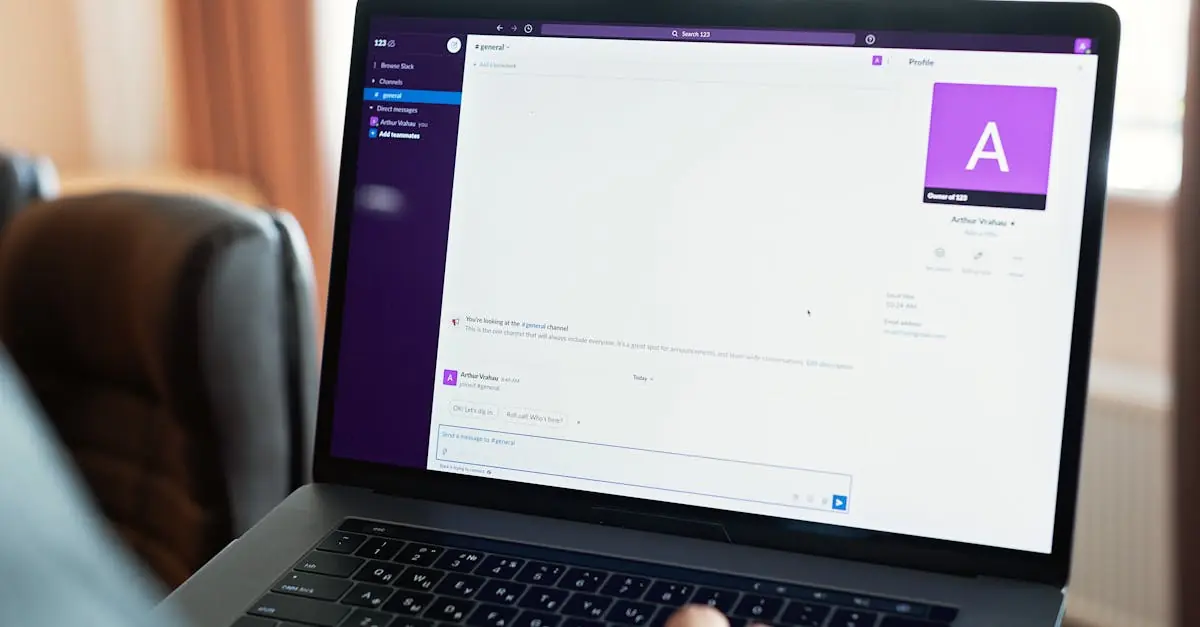Table of Contents
ToggleIn a world where everyone’s vying for attention, app referral programs are the secret sauce that can turn a simple download into a viral sensation. Imagine getting rewarded for sharing an app you love—it’s like receiving a thank-you note for introducing your friends to the best pizza place in town. Who wouldn’t want a slice of that pie?
These programs not only boost user engagement but also create a community of loyal fans. With a sprinkle of humor and a dash of strategy, they transform ordinary users into brand ambassadors. If you think about it, it’s like having a personal cheer squad, but without the pom-poms. Whether it’s discounts, free trials, or exclusive features, app referral programs are the clever way to grow an audience while keeping everyone smiling. Let’s dive into how these programs work and why they’re a game-changer for both users and developers alike.
Overview of App Referral Programs
App referral programs serve as a strategic method for businesses to increase their user base through existing customers. These programs incentivize current users to invite friends and family to download and engage with the app. Incentives typically include rewards such as discounts, in-app credits, or exclusive features for both the referrer and the new user.
Developers design these programs to create a win-win situation. Users share a product they enjoy while receiving tangible benefits in return. Furthermore, brand loyalty often increases as users feel more connected when they bring others into the community.
Statistics reveal that referred users are more likely to remain engaged long-term compared to users acquired through traditional marketing methods. Referral programs, according to studies, can result in a user acquisition cost that is 50% lower than paid advertising.
Users appreciate these programs due to the social aspect of sharing favorite apps. Engaging in referrals not only benefits the user but also helps cultivate a sense of community around the app. Trends indicate that app developers notice significant boosts in download rates during promotional referral campaigns.
Referral programs help harness the power of word-of-mouth marketing effectively and foster a thriving user ecosystem. Enhanced user engagement occurs more frequently as users leverage their networks to gain higher rewards.
Benefits of App Referral Programs
App referral programs offer significant advantages for both businesses and users. These programs effectively leverage existing customers to drive new user acquisition and boost engagement.
Increased User Acquisition
Referral programs prove to be a powerful tool for increasing user acquisition. Businesses often see a 50% reduction in user acquisition costs compared to traditional marketing methods. Users receiving recommendations from friends trust these suggestions more, leading to higher conversion rates. App referral programs encourage current users to invite friends and family, prompting a natural growth effect. A significant number of new users tend to download apps shared by personal connections, highlighting the impact of word-of-mouth marketing. Thus, companies benefit from an expanding user base while utilizing existing clients to spread the word.
Enhanced User Engagement
User engagement levels rise significantly through app referral programs. When users have the incentive to share and invite others, they become more invested in the app. Fulfilling rewards, such as discounts or exclusive features, motivate users to remain active. Engaging a network of friends fosters community bonds within the app, creating a loyalty loop among users. New users often engage longer as they join with personalized recommendations, enhancing their experience from the start. Promotion strategies that incorporate referral incentives frequently result in substantial boosts in activity, demonstrating the effectiveness of these programs in cultivating user retention.
Key Components of Successful Referral Programs
Successful app referral programs hinge on several key components. Organizations can maximize engagement through effective strategies that resonate with users.
Referral Incentives
Incentives play a crucial role in encouraging users to participate in referral programs. Offering tangible rewards, such as discounts or credits, motivates users to share the app. Exclusive features and early access to new content enhance the appeal as well. Organizations benefit when both the referrer and the new user receive incentives, creating a mutual reward system. This dual incentive model leads to higher engagement rates, resulting in a more vibrant user community. Referral incentives should align with user preferences, ensuring that the rewards are relevant and desirable.
Tracking and Analytics
Tracking and analytics serve as vital elements of successful referral programs. Implementing robust analytic tools enables organizations to monitor user engagement effectively. Understanding user behavior through data helps refine program strategies. Metrics such as conversion rates and user retention rates provide insight into the effectiveness of referral efforts. Organizations can identify which incentives drive participation most effectively, ensuring continuous program improvement. By analyzing referral sources, businesses can focus on their most successful channels. This data-driven approach allows for targeted optimizations that enhance overall program performance.
Best Practices for Implementing Referral Programs
Identify clear goals for the referral program. Goals could include increasing downloads, enhancing user engagement, or boosting conversions. Aligning program objectives with business goals streamlines strategy execution.
Prioritize user experience in referrals. A seamless sign-up and sharing process encourages participation. Simplifying the referral steps minimizes friction and leads to higher completion rates.
Optimize incentives for both referrers and new users. Offering compelling rewards, such as discounts or exclusive features, motivates users to share. A dual incentive model strengthens participation by ensuring everyone benefits.
Leverage robust tracking and analytics. Utilizing analytic tools enables businesses to monitor engagement and behavior. Analyzing metrics, like conversion and retention rates, allows continuous refinement of strategies for better results.
Communicate effectively throughout the process. Clear messaging about how the referral program works enhances user understanding. Regular updates about new incentives can reignite interest and increase sharing activity.
Encourage social sharing across channels. Making it easy for users to share via social media platforms expands reach. Integrating share buttons directly into the app can boost visibility, promoting organic growth.
Test various aspects of the referral program. Experimenting with different incentive types or communication methods can reveal what resonates most with users. A/B testing can yield insights into the optimal approach for maximizing engagement.
Case Studies of Successful App Referral Programs
Dropbox serves as a prime example of effective app referral programs. It implemented a system where users gain additional storage space for both inviting friends and for friends who sign up. This approach led to a 3900% increase in user sign-ups, demonstrating the significant impact of rewarding both referrers and new users.
Airbnb exemplifies successful referral incentives too. Users earn travel credits when friends book their first stay. This model not only encourages new user acquisition but also fosters a community of engaged users eager to share their experiences. The company experienced a 300% increase in referral-generated listings, highlighting how targeted incentives can transform user behavior.
Uber also showcases the effectiveness of referral programs. Its strategy involves giving both the referrer and the new user ride credits. This dual reward system encourages existing users to share the app widely, resulting in substantial growth. Uber’s referral program contributed to a 91% increase in ride requests after its launch, emphasizing the importance of compelling rewards.
Another notable case is PayPal’s referral tactic. Initially, it offered users $10 for each referred friend who signed up, creating a viral growth effect. As a result, PayPal garnered 100,000 users within a month. This rapid expansion reveals how financial incentives can drive quick adoption and long-term user loyalty.
These case studies illustrate several key elements of successful app referral programs. Incentives must align with user motivations while effectively tracking engagement is vital for refining strategies. By observing these examples, businesses can formulate their referral programs to enhance user acquisition and promote ongoing engagement.
Conclusion
App referral programs represent a powerful tool for businesses aiming to grow their user base and enhance engagement. By leveraging the natural tendency of users to share their favorite apps with friends and family, companies can create a vibrant community of advocates.
The dual incentive model not only rewards existing users but also attracts new ones, leading to a mutually beneficial relationship. As seen in the successful case studies, tailored incentives can significantly boost user acquisition and retention.
Implementing best practices and utilizing data-driven strategies will ensure these programs remain effective. Overall, app referral programs can transform the way businesses connect with their audience, fostering loyalty and driving sustainable growth.





